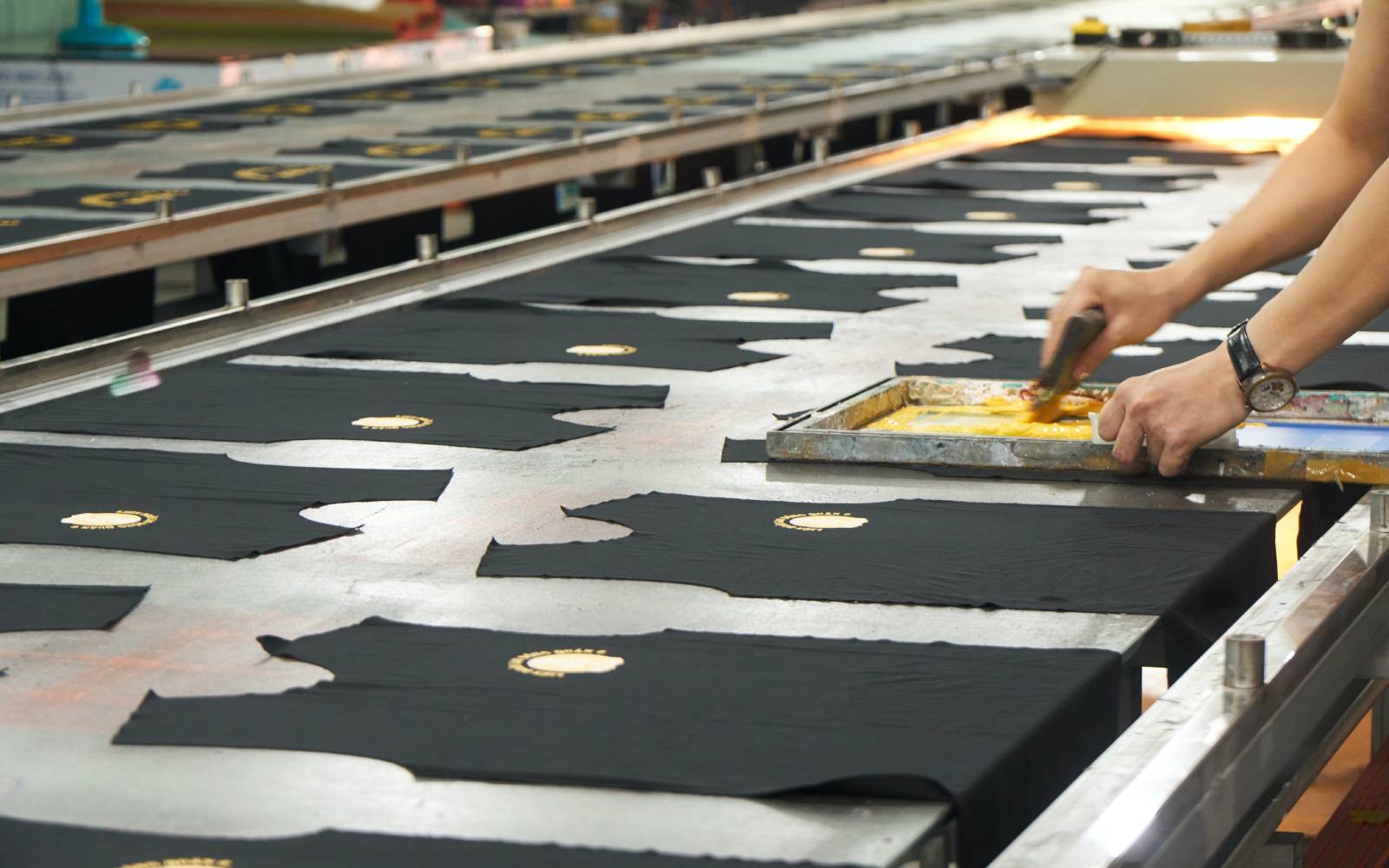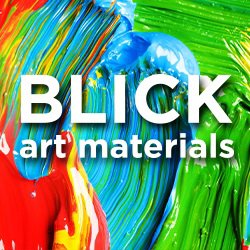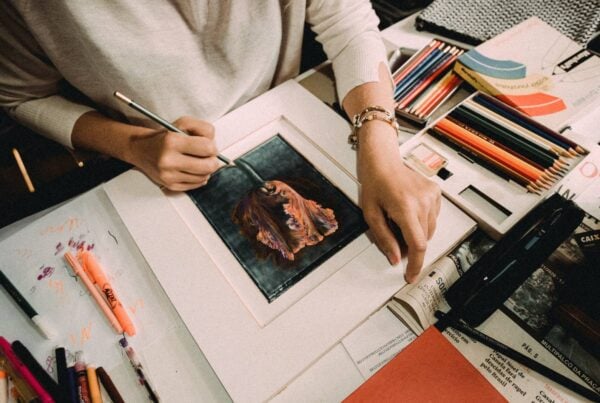Fabric printing is an intricate art that has been practised for centuries across various cultures and continents. This textile tradition has been shaped by an amalgamation of techniques and methods, and it has continually evolved in response to technological advancements. As we progress further into the digital era, we find a beautiful blend of traditional and modern methods being employed to create stunning and innovative fabric designs.
This guide provides an overview of four prevalent fabric printing methods, namely screen printing, digital fabric printing, heat transfer printing, and dye sublimation printing. Each of these methods comes with unique procedures, applications, and benefits, thereby offering endless creative possibilities to both designers and manufacturers. Whether you’re a seasoned professional or an enthusiastic beginner exploring fabric printing, understanding these methods will help you select the best technique for your project.
Table of Contents
1. Screen Printing
Screen printing, or silk screening, is a method that originated in China around 960-1279 AD during the Song Dynasty. Initially, it used human hair for the screen, and leaves and simple stencils to create patterns. As the method travelled west, silk was used for the screen, giving it the name “silk screening”.
Process:
- A design is created and transferred onto a fine mesh screen.
- The areas not to be printed are blocked out on the screen using waterproof material.
- The screen is placed on the fabric, and ink is added to the frame and spread over the screen, pushing the ink through the open areas of the stencil.
- Once printed, the fabric is then dried and set, usually in a drying tunnel.
Benefits:
- Creates high quality and durable prints.
- Great for large-scale production as the same design can be printed multiple times.
- Allows for vibrant colours even on darker fabrics as ink layer is thicker.
2. Digital Fabric Printing (Direct-to-Garment)
Digital fabric printing, or Direct-to-Garment (DTG), emerged in the late 20th century, revolutionising the world of fabric printing. DTG printing is similar to using a standard inkjet printer but for fabric. This method allows for high detail and a limitless colour range making it perfect for intricate designs.
Process:
- A digital design is created on a computer using graphic design software.
- The design is then sent directly to the printer where the inks are applied to the fabric in small droplets by a print head.
- The fabric is then treated with heat or steam to fix the ink (this depends on the type of fabric and ink used).
- The printed fabric is then washed and finished.
Benefits:
- Allows for highly detailed designs, meaning complex patterns and images can be printed.
- Great for small orders or one-offs due to the lack of setup costs.
- Can print a large number of colours and gradients, creating an unlimited palette for design.
3. Heat Transfer Printing
Heat transfer printing evolved during the 20th century and became widely used in the 1960s. It’s often used to apply decorative designs to garments and other fabrics. There are different types of heat transfer printing including vinyl heat transfer and digital print heat transfer.
Process:
- A design is printed onto heat transfer paper using a special type of ink.
- The printed paper is then placed onto the fabric, design side down.
- Heat is applied to the paper, typically using a heat press. The heat causes the ink to melt and be absorbed by the fabric, transferring the design onto it.
- Once cooled, the transfer paper is peeled away, leaving the design on the fabric.
Benefits:
- Allows for full-colour and complex designs, including photos and graphic images.
- Great for small batches or one-off designs as there is minimal setup required.
- Can be used on a variety of fabric types, including cotton, polyester and blends.
4. Dye Sublimation Printing
Dye sublimation printing was developed in the 1950s, but it didn’t gain popularity until the 70s. This method uses heat to transfer dye onto materials such as a plastic, card, paper, or fabric. This type of printing is commonly used for decorating apparel, signs and banners, as well as novelty items such as cell phone covers, plaques, coffee mugs, and other items with sublimation-friendly surfaces.
Process:
- A design is printed onto specific paper using sublimation ink.
- The paper and fabric are then put through a heat press. This process typically occurs at around 180-210 degrees Celsius.
- The heat turns the ink into a gas, which permeates the fabric and then solidifies into its fibres. The fabric is permanently dyed, so it can be washed without damaging the quality of the image.
Benefits:
- Creates high-quality, vibrant, and durable prints as the ink becomes part of the fabric structure rather than sitting on top.
- Great for complex and photographic designs as the printer can recreate gradations and colour variations effectively.
- Can be used on synthetic materials like polyester and nylon. These materials, when heated, become open to allow the gas to enter, and then close upon cooling, trapping the ink inside.
Comparison of Fabric Printing Methods
| Method | Best for | Pros | Cons</ th> |
|---|---|---|---|
| Screen Printing | Large scale production | Durable, vibrant colours, suitable for dark fabrics | Setup costs, not suitable for highly detailed designs |
| Digital Fabric Printing (DTG) | Small orders, personalised items | Highly detailed designs, large number of colours | Slower for bulk orders, less vibrant on dark fabrics |
| Heat Transfer Printing | Small batches, one-off designs | Full-colour and complex designs, variety of fabric types | Can feel heavy, may fade over time |
| Dye Sublimation Printing | Complex and photographic designs | High-quality, vibrant, durable prints, suitable for synthetic materials | Only suitable for light-coloured fabrics, requires special ink |
Conclusion
Fabric printing is an exciting realm where creativity meets technique. Whether it’s the traditional charm of screen printing, the precision of digital fabric printing, the adaptability of heat transfer printing, or the vibrancy of dye sublimation printing, each method offers a unique avenue for expressing your artistic vision.
Remember, the “best” method depends entirely on your specific needs, such as the level of detail in your design, the type of fabric you’re using, and the number of prints you require. By understanding the features, benefits, and limitations of each method, you can make an informed decision that brings out the best in your design.
Fabric printing is not only a way to create beautiful textiles; it’s also a powerful medium of communication that transcends language barriers. Whether you’re telling a story, sending a message, or simply creating something visually stunning, the possibilities in fabric printing are only limited by your imagination. Explore, experiment, and most importantly, enjoy the process!










